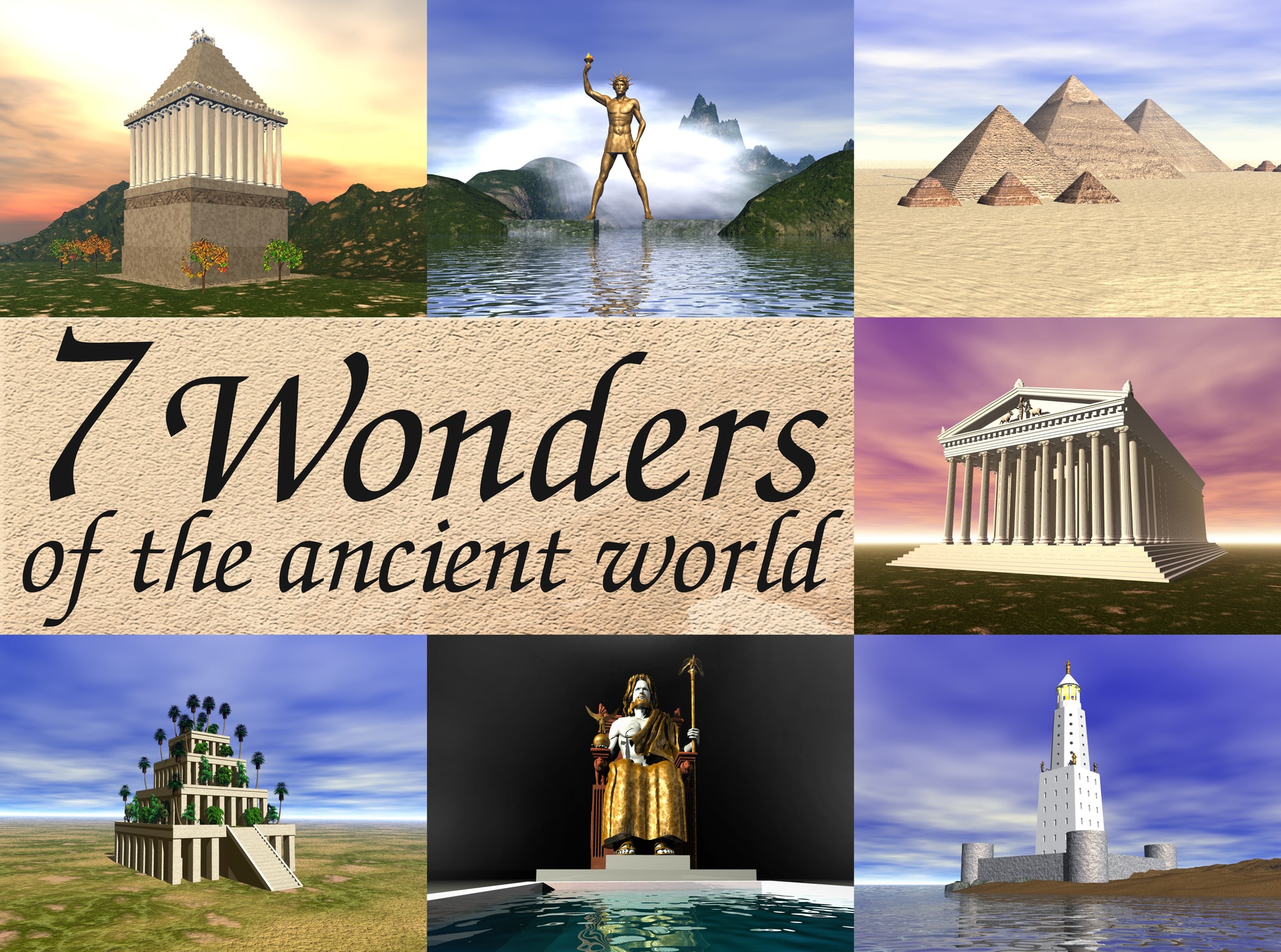This blog post will help you find out everything about the seven wonders of the ancient world. Find out why the ancient people built them and how they built them. Also find out what destroyed these amazing monuments.
Man has always been fascinated by nature, its beauty, and its magnificence. Either in an attempt to replicate such grandeur or to show off a king's power or to even please the gods, humans built massive structures.
The responses of visitors looking at these structures were naturally, awe, and wonder. So, a few of them attempted to create a list of such wonders to tell the world what they had seen. Among them, the Greek historian Herodotus compiled the first list of the Seven wonders of the world. Today, historians all over the world consider Herodotus, who lived in the fifth century BC, as the father of History.
Why did the Greeks choose number 7?
The Greeks chose the number 7 because, just like in many other cultures, for the Greeks as well, the number Seven represented perfection. And also because, at that time, the Greeks knew of only five planets. Add to it the Sun and the moon, and the number of heavenly bodies known at that time becomes 7.
The seven wonders of the ancient world
1. The Great Pyramid of Giza (2650 BC)

Located in Egypt, the Great Pyramid of Giza is the only ancient wonder that still exists today. Out of the 80 pyramids in Egypt, the Great Pyramid of Giza is the largest.
Why were the pyramids built?
Ancient Egyptians built the pyramids to serve as burial grounds for their rulers called Pharoahs. The Egyptians believed in the afterlife. So, they built their pyramids in the shape of prisms, pointing to the heavens. By doing so, they believed that their rulers can safely travel to the next world.
Why was the Great Pyramid considered a world wonder?
The Great Pyramid became a world wonder due to its massive proportions. More than 2 million stone blocks were used to build the great pyramid. The blocks at the base were bigger and heavier than those at the top. For almost 3800 years, nobody could construct any building taller than the Great Pyramid.
Built by the Egyptians in 2650 BC for their great Pharoah Khufu, the Great Pyramid of Giza was 146 meters tall. Now, it is only 138 meters tall due to the top part of the pyramid going missing and also due to erosion. At that time, it was the largest man-made structure. Indeed, it was the largest man-made structure until 1300 AD.
How long did it take?
The Egyptians built the Great Pyramid of Giza using limestone and granite.
Researchers believe that it could have taken 20,000 Egyptians, assembling stone blocks at a rate of 1 stone block every 2 minutes using just stone and copper tools, 23 years to complete this ancient world wonder.
Challenges
The biggest challenges faced during the construction of the Great Pyramid were cutting rocks into stone blocks and moving them.
Ingenious solutions
To cut the rocks, Egyptians hammered wooden wedges into rocks and let the rocks soak in water. As the water moved into the rocks, the holes expanded, and the rocks cracked.
The Great Pyramid of Giza was built at a time when wheels were not known to Egyptians. So, they used wooden sleds to move the stones on ramps around the pyramid. They poured a specific amount of water on the sand along the way to reduce friction and make it easier to pull the sleds.
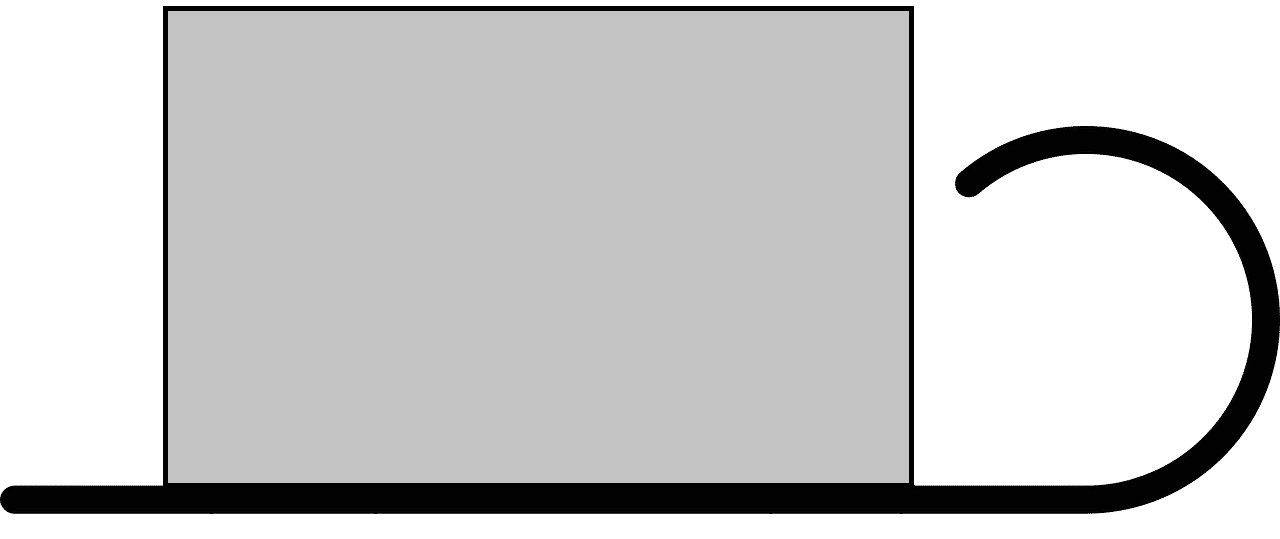
Stone on a sled
2. Hanging Gardens of Babylon (sometime between 605 BC and 562 BC)
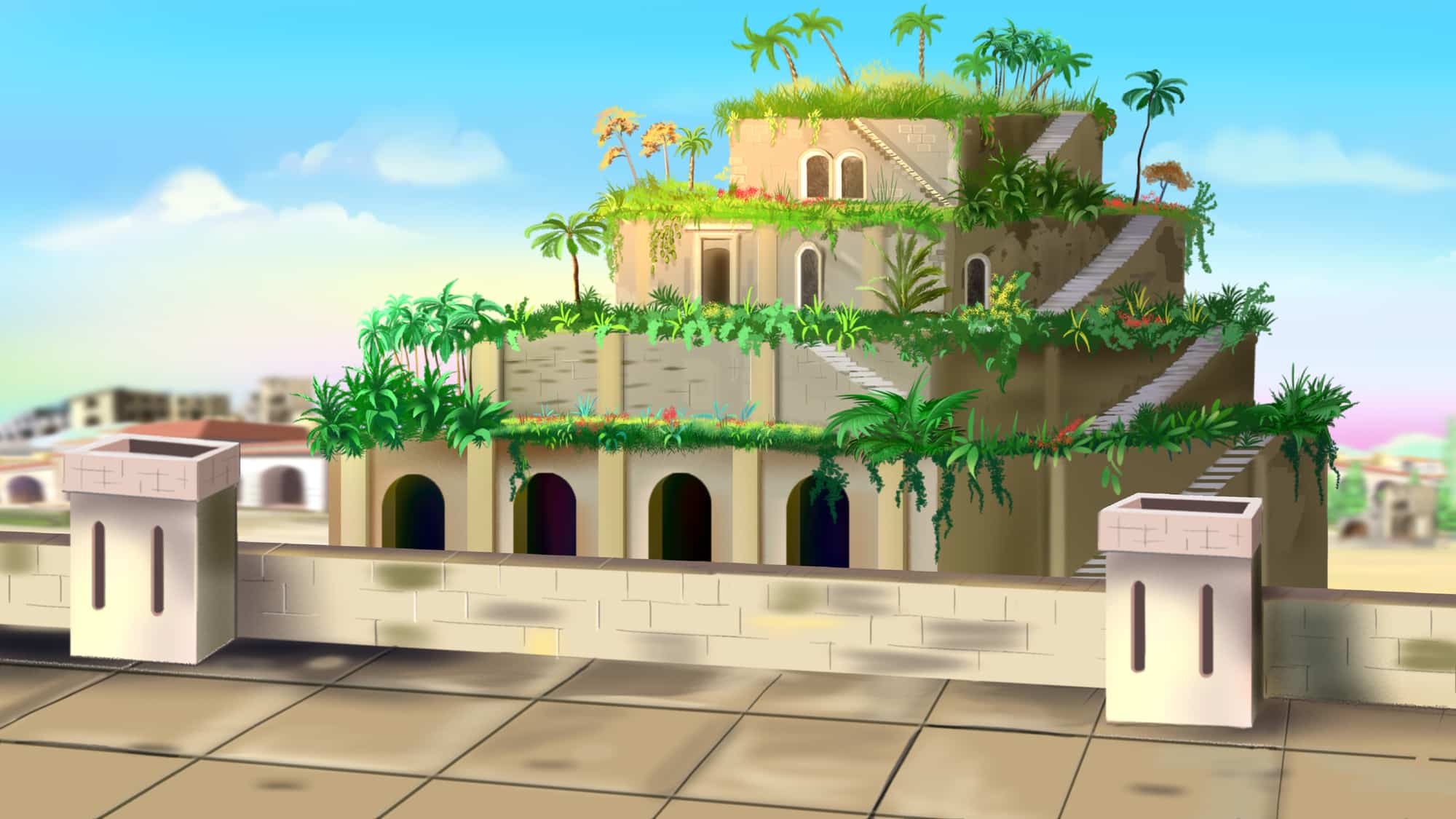
Of all the seven wonders of the ancient world, the Hanging Gardens of Babylon is the only wonder that displayed nature's beauty. It is also the only wonder whose location is not known accurately, even though historians believe that it was in present-day Iraq. So, some historians believe that it is a mythical garden that existed only in people's imagination.
Why was it built?
King Nebuchadnezzar II built the gardens for his wife.
His wife grew up in a mountainous terrain full of green trees everywhere. But in Babylon, a desert city, she couldn't see plants or trees anywhere. So, she became homesick after coming to Babylon. Therefore, King Nebuchadnezzar II, who wanted to cheer her up, built the stepped gardens, with trees and plants on several floors, to create a mountain-like appearance.
Why was this considered a world wonder?
The Hanging Gardens was captivating due to the variety of trees, plants, and flowers that grew there. Moreover, the scents from the flowers and the leaves were relaxing to the Babylonians.
But the Hanging Gardens was not chosen as a world wonder due to its beauty.
Babylon was an arid (desert) land that lacked the conditions needed for agriculture. Hence, it was heavily dependent on trade for agricultural goods to feed its population.
The difficult task of creating and maintaining the garden on the top of a palace in the middle of a desert, where even grass wouldn't grow naturally, was the reason that Hanging Gardens of Babylon was chosen as a world wonder.
Challenges
1. Babylon had no supply of stones. So, the entire city was built using bricks made of clay, which can become clay again when they come in contact with water.
2. Watering the plants and trees grown on top of such a palace carries great risk - if water reaches the walls or the base of any floor of the palace, the palace can come crashing down. In Babylon, water was as valuable as gold. So, fetching the water required for the plants to the top of the palace could have been a significant challenge.
Ingenious solutions
1. According to Diodorus Siculus, a Greek historian, each platform where the trees and plants were to be planted was covered entirely with blocks of stone. Upon it, a layer of reeds was placed, followed by a layer of Asphalt, a layer of tiles, and finally, a sheet of lead. Then, enough depth of soil was laid on it before planting the trees and plants.
2. Even though the water needed for the gardens must have come from the Euphrates river, it is not clear how the Greeks might have done that.
The most probable solution is a chain pump (like buckets tied to a rope) to fetch water from the river to the highest floor of the palace, from where the water might have flowed down to the trees and plants on lower levels.
How was it destroyed?
Nobody is sure how the hanging gardens were destroyed. But the most probable reason was that there was no one to take care of them.
3. Statue of Zeus (435 BC)
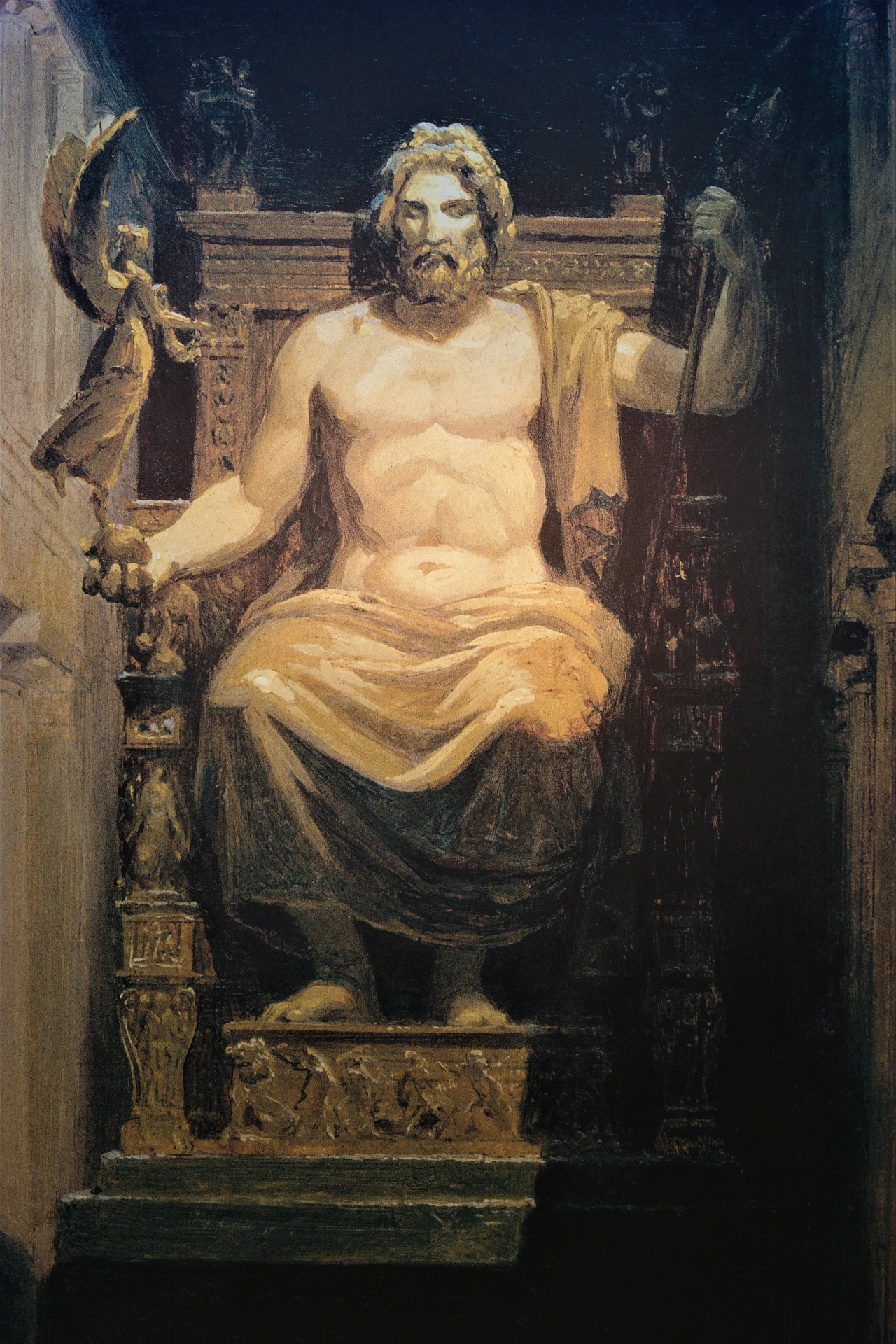
One of the marvels of the ancient world, the Statue of Zeus, was once located in Olympia in Greece, where Olympic games were held. The statue of Zeus was as tall as a four-story (What does the word `story` mean?) building (12.4m). It was built by Phidias.
However, in the 5th century AD, a fire (most probably) destroyed the statue. Even its remains don't exist now. Therefore, details about what it was made of and how it used to look are only known from ancient Greek texts and coins.
Why was the Statue of Zeus built?
Around 480 BC, after the Greeks defeated the invading Persian army, they were able to loot a lot of money from the Persians (The movie 300 was based on this war). In addition to that, they also controlled important trade routes. Thus, Greece, particularly the city of Athens, became very rich. Hence, to show off their superiority over other Greek cities, Athenians paid Phidias to build a statue of Athena.
Looking at the magnificence of that statue, another city of Greece - Olympia, asked Phidias to build a more magnificent statue to honor the king of Greek gods, Zeus. Eventually, the Statue of Zeus ended up becoming even more magnificent than the Statue of Athena.
Why was this considered a world wonder?
Even though the Statue of Zeus was said to be covered with gold and other precious stones, what made this a world wonder was its magnificence, the awe it created and how real it looked - a four-story tall statue of Zeus made of Ivory plates fit on a wooden frame that gave the impression to the onlookers that they were looking at the god himself.
How long did it take?
Phidias took 12 years to complete the statue.
Challenges
The real problem was acquiring the amount of ivory it would take to cover a wooden framework that was about 40 feet tall.
Ingenious solutions
According to this documentary from the Discovery channel, Phidias wanted to reduce the amount of ivory required. So, he carved or peeled out the ivory as scales (just like peeling an orange or like sharpening a pencil) instead of cutting it. However, ivory scales are not soft and cannot bend easily and, therefore, cannot be shaped. Therefore, he might have soaked these ivory scales in vinegar, which softened them. Then he might have shaped it and dried it to make it maintain that shape.
How was it destroyed?
Several theories exist as to how and when it was destroyed. However, there isn't much clear evidence. The most famous theory is that it was destroyed by a fire in the 5th century AD.
4. Temple of Artemis (430 BC)
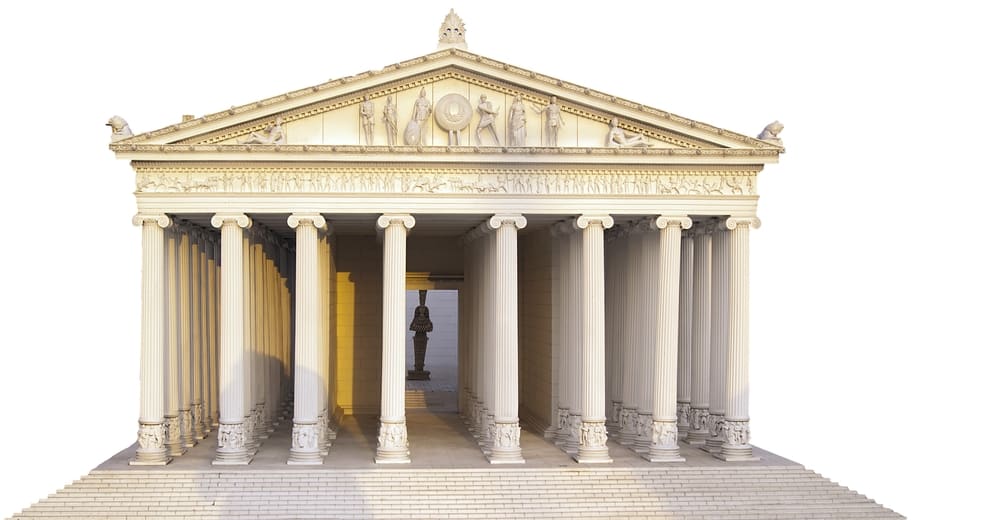
The Temple of Artemis was a world wonder that was so important to the Greeks that they rebuilt it twice after it was destroyed. It was located in present-day Turkey.
Why was the Temple of Artemis built?
The Temple of Artemis was a temple made of marble, built to honor Artemis, the Greek goddess of Wilderness and fertility. Since Artemis was a goddess of nature who oversaw boundaries, the Temple of Artemis was built very near to the city but not in the city itself.
Why was this considered a world wonder?
The ancient Greeks chose the Temple of Artemis as a world wonder due to its enormous size and beauty. Its location next to the sea could have also added to the beauty of the temple.
The Temple of Artemis was 450 feet long, 225 feet wide and 60 feet high.
Antipater of Sidon, a Greek poet who created another list of the seven wonders of the ancient world in 140BC, claims that the other wonders of the world lost their brilliance when he first looked at the Temple of Artemis that rose to the clouds. In addition to that, he also says that nothing in this world other than the Sun-god himself ever seemed so grand.
How long did it take?
The second version of the temple, which became a world wonder, could have taken up to 120 years to build.
Challenges
Three significant challenges made the construction of the temple an almost impossible task.
1. The temple was located near the sea. Hence, the base was marshy. Since each of the 127 cylindrical columns was estimated to have weighed 24 tons, if such a huge temple were built on such a marshy base, it would fall to the ground soon.
2. Transporting the massive cylindrical columns and cubical ceiling stones required to build the temple from the quarry.
3. Placing the ceiling stones next to each other with precision.
Ingenious solutions
1. To make the marshy base stable, the base was dug up and filled with charcoal and animal skins.
2. The cylindrical columns were transported by rolling them. Semi-spherical wooden casings might have been fitted on the two opposite faces of the cuboid to roll them.
3. The ceiling stones were first placed on bags of sand. When the bags were cut, the sand moved out of the bags lowering the stone very slowly. This gave the sculptors time to adjust the ceiling stones so that they could be placed accurately.
How was it destroyed?
The temple was first built around 800 BC. But in the seventh century BC, it was destroyed either by flood or by war. So, the first reconstruction began in 550 BC to rebuild the temple four times larger than the original one. It would take 120 years for this reconstruction to finish.
The Greeks believed that, in 356 BC, on the night of Alexander's birth, the goddess Artemis left to attend to his birth leaving her temple unguarded. On the same night, it was deliberately burnt down by Herostratus, an arsonist who wanted his name to be known throughout the world.
Reconstruction soon began once again. But it wasn't finished until after the death of Alexander in 323 BC. Then, in 262 AD, it was destroyed again, this time, by invading Goths. What was left, was damaged by an earthquake and was finally destroyed completely in 401 AD.
5. The Mausoleum at Halicarnassus(350 BC)
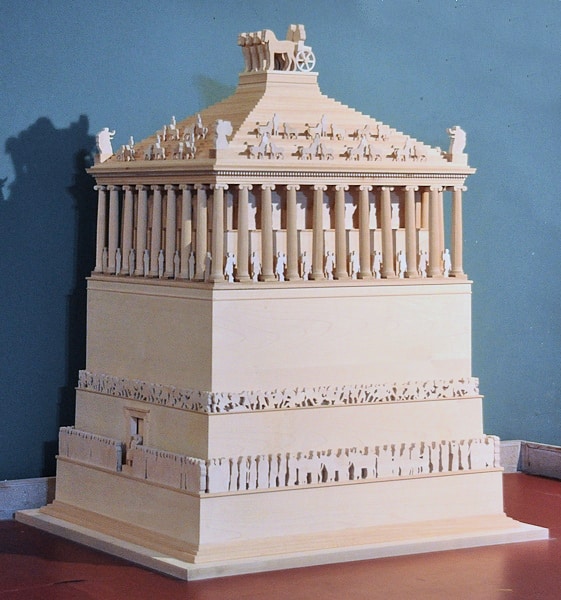
By Jona Lendering - Livius.org Provided underCC0 1.0 Universal license. Retouched by the uploader., CC0, Link
The term Mausoleum originated from this Persian building. Built by and for the King Mousolus, the king of a province of the Persian kingdom, the Mausoleum would have stood in present-day turkey if it weren't destroyed.
Why was the Mausoleum built?
Mausoleum was built to serve as a burial chamber (tomb) for Mausolus and his wife. Even though Mausolus started its construction, it wasn't finished at least until two years after his death. His sister and wife Artemisia continued to oversee its construction but, she too died before it was finished.
Even after Artemesia died, the sculptors who built the Mausoleum decided to stay and finish it because they thought it was a once-in-a-lifetime opportunity to make their name known to the world as famed sculptors.
Sculptors from all over the world were summoned to build the Mausoleum. Since sculptors from different countries built the Mausoleum together, different parts of the Mausoleum depicted different building styles, including Greek (statues and 12-meter tall pillars), Egyptian (pyramid-like mid section), and Lycian building styles.
Why was this considered a world wonder?
The Mausoleum was a 43-meter (14 stories) tall colossal building made mostly of marble. Even though it was an enormous building, what earned it the position of a world wonder could have been the giant statues that adorned the Mausoleum on every side of it.
At the very top of the Mausoleum was the statue of a chariot driven by Mausolus and Artemesia pulled by four horses. The concept of a statue on top of a building was first used in the construction of Mausoleum.
How long did it take?
The Mausoleum was built in less than 3 years.
How was it destroyed?
Between the 12th century AD and 1404 AD, an earthquake destroyed the Mausoleum. Around 1494 AD, crusaders, who came to the city, took the stones and statues to build their castles.
Right now, only the remains of the base of the Mausoleum are found in Bodrum, Turkey.
6. Lighthouse of Alexandria (283 BC to 279 BC)
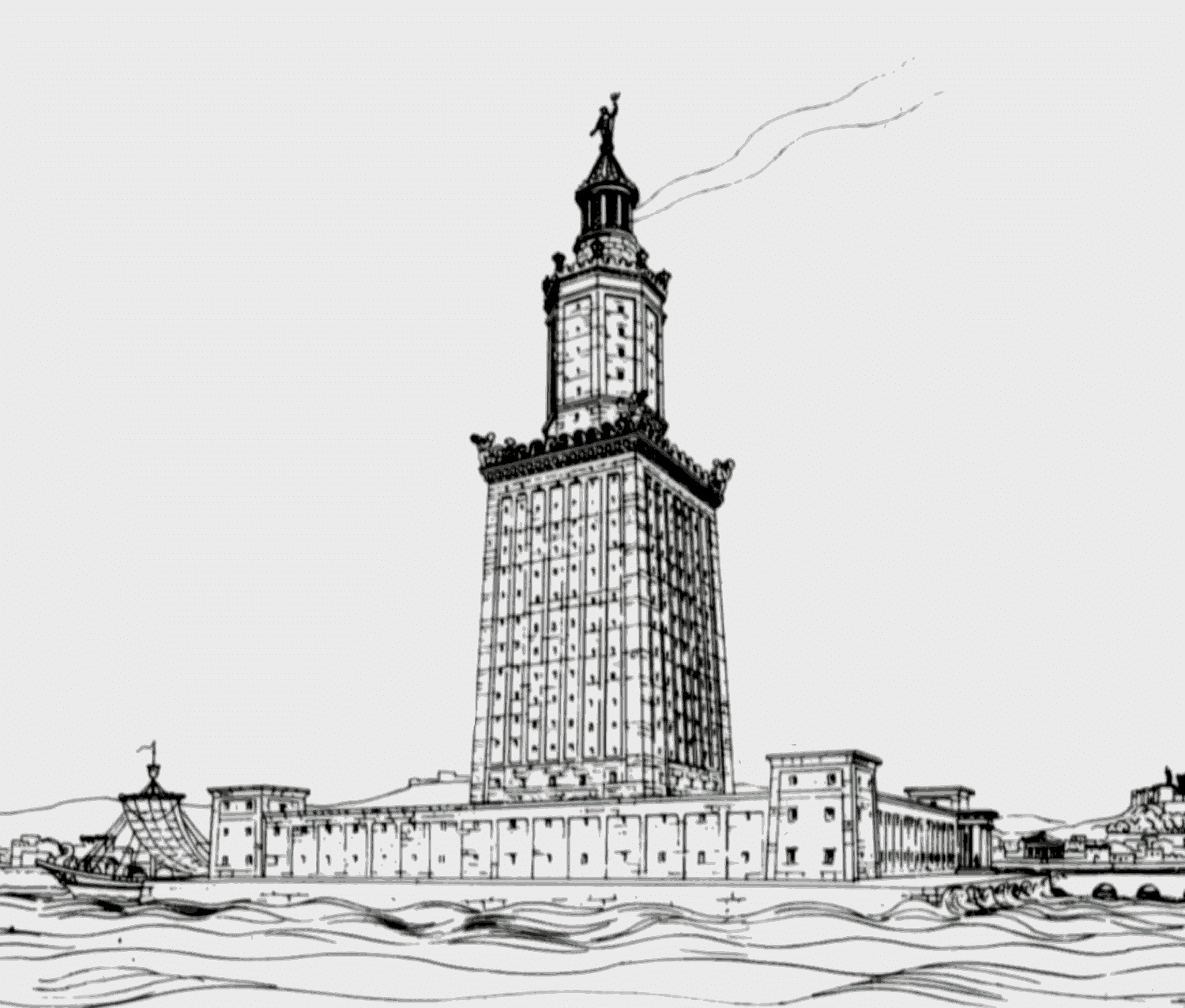
By Prof. Hermann Thiersch (1874–1939) - Hermann Thiersch, Public Domain, Link
Of all the seven wonders of the ancient world, the only wonder that had a practical use is the lighthouse of Alexandria. It was located in Alexandria (present-day Egypt), a city Alexander, the Great, founded in 331 BC.
Why was it built?
After the death of Alexander, one of his companions, Ptolemy I Soter, became the king of Egypt. Since Alexandria was a harbor city and a center of trade, it needed a way to guide the ships to the shore.
At the same time, Ptolemy I Soter wanted to make his name known throughout the world. So, he ordered the construction of a lighthouse, the likes of which the world had never seen.
Why was this considered a world wonder?
Built using limestone and marble, the lighthouse of Alexandria was 100m -140m tall and could cast light up to 50 miles into the sea. It was the second tallest building at the time.
The lighthouse of Alexandria was chosen as the world wonder due to its utility and size. It is the oldest lighthouse known to humanity. It became a model for lighthouses built later on.
How long did it take?
Challenges
1. The light produced at the lighthouse came at a cost - fuel. However, wood wasn't readily available in Egypt. Hence, it is not clear as to what fuel was used in the lighthouse.
2. The lighthouse should be hollow so that fuel can be transported to the top of the lighthouse, where it can be burnt to make fire. However, if the base were hollow, it would have been very difficult for the base to bear the entire weight of such a big lighthouse. This means that the lighthouse can fall easily.
Ingenious solutions
1. It is still not clear as to what fuel the Egyptians used to create fire in the lighthouse.
2. To make the base stable so that the weight of the lighthouse is distributed evenly and that the lighthouse doesn't fall easily, the walls were built to be very thick.
How was it destroyed?
The lighthouse of Alexandria withstood the test of time and forces of nature for more than 1500 years. However, after surviving five earthquakes, the lighthouse finally collapsed in 1323 AD. In 1480 AD, the local Sultan used most of its remains to construct a local fort.
7. Colossus of Rhodes (280 BC)
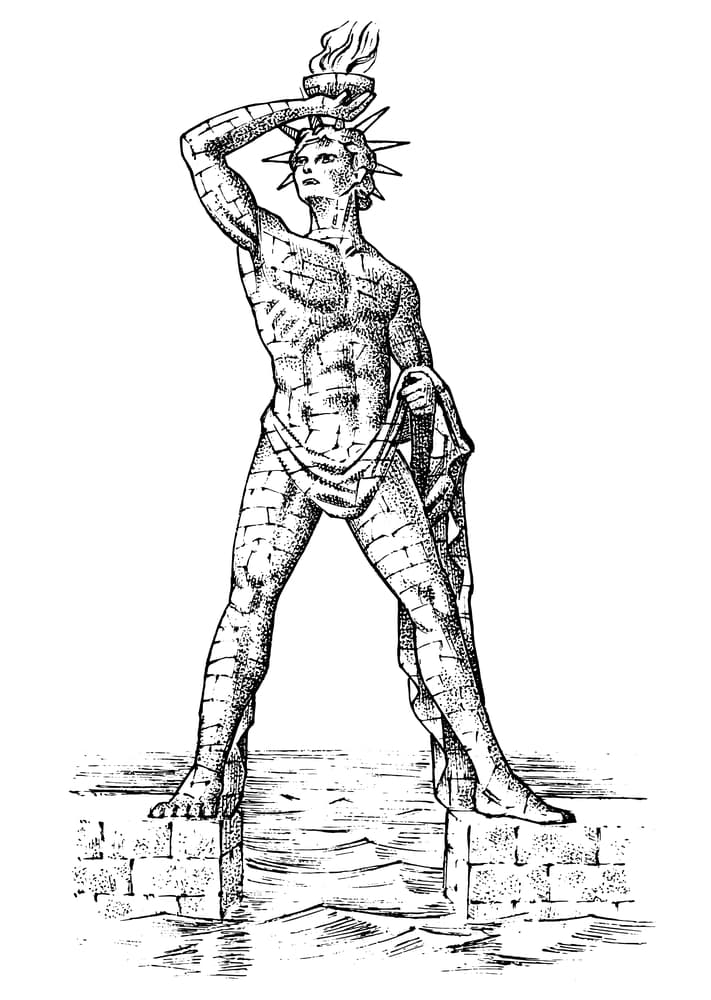
Rhodes is an island that has been a part of Greece since ancient times. Chares, a Greek sculptor born on that island, built the Colossus of Rhodes as a tribute to their patron God Helios (the Greek sun god).
Why was it built?
The island of Rhodes was located on a strategic location along a major trade route between Asia and Egypt. Since it was trading with both Asia and Egypt, it became very rich.
Alexander the Great expanded the Greek empire by conquering many nations. After his death, his generals started ruling his provinces. Antigonus I, One such ruler who controlled Northern Greece and Macedonia, noticed the wealth of the island and sent his fleet with his son to conquer Rhodes.
Rhodes, however, with the help of Egypt, managed to thwart the attack.
The citizens of Rhodes decided to build the Colossus as a memorial to celebrate their victory over Macedonia. They sold the siege material left behind by the Macedonian troops to pay for the bronze statue.
Why was this considered a world wonder?
The Colossus of Rhodes was chosen as a world wonder due to its enormous size. It was 108 feet tall.
Chares built the Colossus using a framework made of wood and iron. He then covered with bronze plates.
How long did it take?
It took 12 years to build the Colossus.
Challenges
1. The hollow statue, even if it is flexible, would not be strong enough to withstand strong winds and will, therefore, fall easily.
2. The statue was built from the bottom. As the statue grew, sand was built around it for the workers to gain easy access to the top. So, Chares couldn't get a glimpse of the statue until the statue was finished, and the sand was removed.
Ingenious solutions
1. To make the statue heavy, Chares and his workers dropped heavy stones into the statue.
2. Unfortunately, for this problem, there wasn't any solution.
How was it destroyed?
Just 54 years after its construction, an earthquake destroyed the Colossus. However, it was never reconstructed because a prophecy predicted great misfortune to Rhodes if it was reconstructed.
Even after it was destroyed, its remains still attracted tourists for another 800 years. In 653 AD, the invading Arabs melted the remains and sold the bronze.
Facts you probably didn't know
1. Contrary to popular belief, the Great Pyramid of Giza was not built by slaves. It was built by paid workers who considered their service to king holy because, in ancient Egypt, kings were worshipped as gods. Hence, service to the king was considered a service to god.
2. Contrary to popular belief, the hanging gardens did not hang from the ceiling or the floor overhead. They were just stepped gardens.
Timeline of the seven wonders of the ancient world
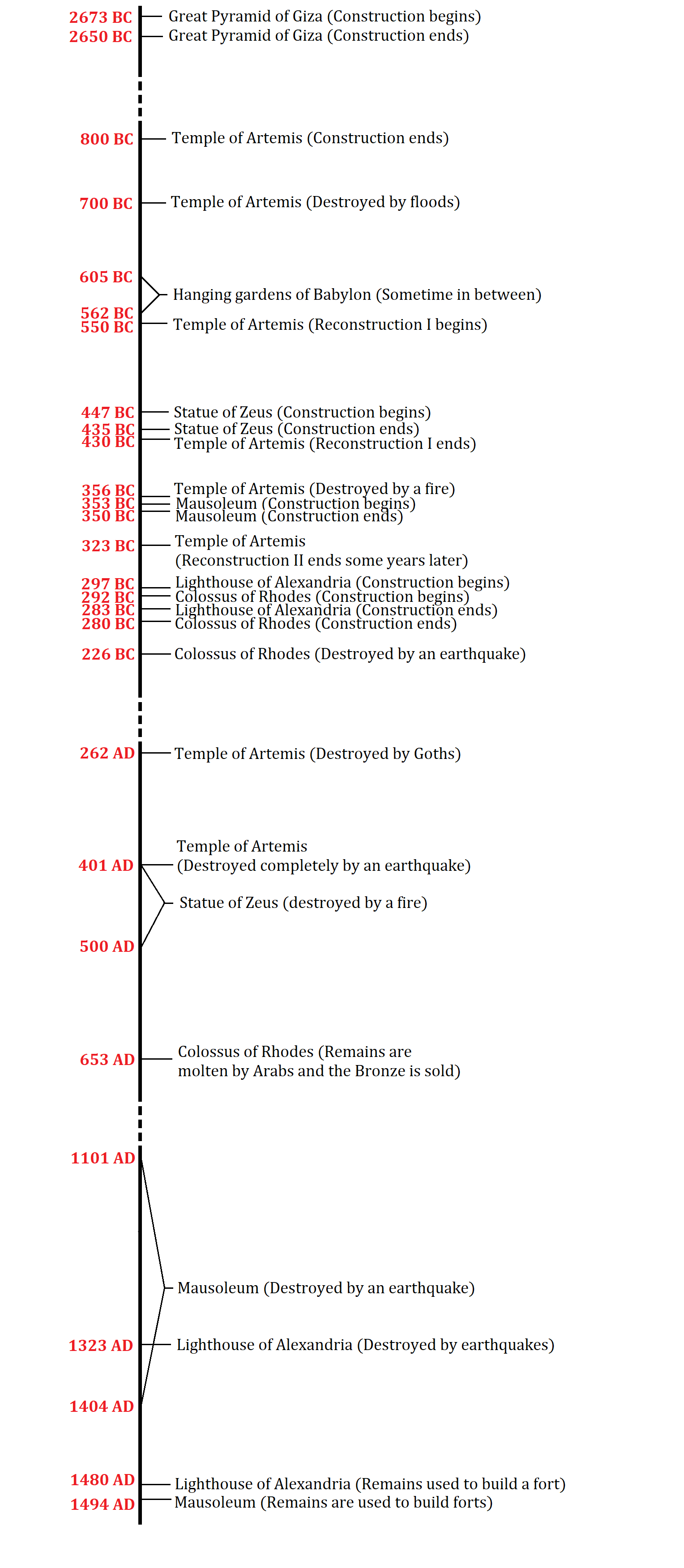
We hope that you liked this blog post about the seven wonders of the ancient world. If you liked this blog post, also check out our blog post on the seven wonders of the world.
